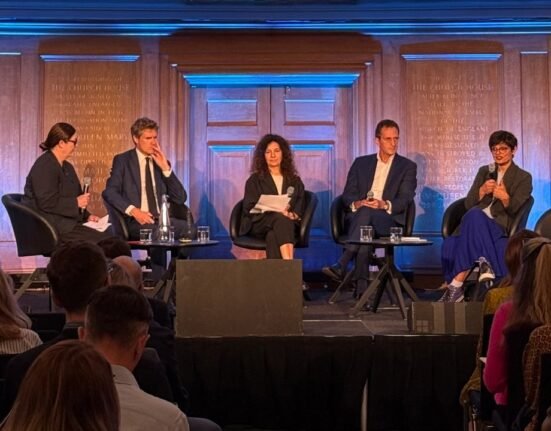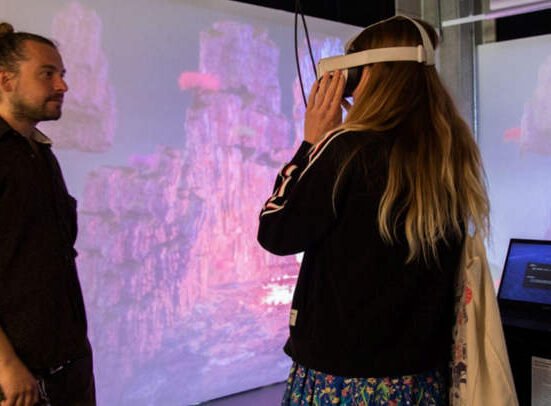Paid non-client promotion: Affiliate links for the products on this page are from partners that compensate us (see our advertiser disclosure with our list of partners for more details). However, our opinions are our own. See how we rate investing products to write unbiased product reviews.
- Non-fungible tokens are unique digital asset that represents ownership of real-world items like art
- NFTs use the same blockchain technology that powers cryptocurrencies but are not a currency.
- While NFTs have sold for millions, they’re highly speculative assets that aren’t for everyone.
Non-fungible tokens (NFTs) are digital assets that link ownership to one-of-a-kind physical or digital items, such as artwork or music. Digital art is the most popular type of NFT and heavily contributed to the NFT boom in 2021. However, the NFT market faced a major downturn in 2023, with a 62% decline.
While the NFT market has experienced challenges, it remains resilient with an active community evolving emerging trends like gaming, the metaverse, and improvements in security, accessibility, and user experience.
You can create and trade NFTs through some of the best cryptocurrency exchanges.
Introduction to NFTs
Non-fungible tokens (NFTs) are unique digital assets representing ownership of specific physical or digital items, such as artwork, real estate, music, or videos. While digital art is the most common type of NFT, the decentralized technology can be applied to a wide range of virtual and tangible assets and experiences
NFTs are non-fungible, meaning each token has unique properties and isn’t worth the same amount as similar tokens. Art and collectibles are often considered non-fungible since only one original exists.
In 2024, the NFT market has integrated greater technological advancements to improve the efficiency and security of NFTs on the blockchain network. It’s also reaching beyond digital art to adopt real-world assets (like tickets and memberships), virtual worlds, fashion, and real estate.
However, investing in NFTs has substantial security risks as digital assets are subject to rapid market volatility. Like cryptocurrency, the NFT market is highly volatile, fluctuating asset prices rapidly. One of the major concerns among market experts is the potential for an NFT bubble, where prices are artificially inflated and may eventually burst.
How NFTs work
You can buy, sell, trade, and create NFTs from online exchanges or marketplaces. The creator or current owner may choose a specific price. Or, there may be an auction, and you’ll have to bid on the NFT. Depending on the marketplace, different fees may be associated with each transaction.
- Blockchain technology: NFTs are traded on decentralized blockchain platforms, primarily Ethereum. The blockchain’s transparency ensures public traceability of NFT ownership, while the option to use a pseudonym protects privacy.
- Digital ownership: NFTs can be considered modern-day collectibles, bought and sold solely online with no physical equivalent. At its core, an NFT represents digital proof of ownership of any given item.
- Smart contracts: Smart contracts are essential for managing NFTs and automating the process of assigning ownership during the minting process. Minting involves converting a digital file into a unique digital asset on the blockchain. Smart contracts can also be used to control the activation or deactivation of NFTs.
What are NFTs used for?
Different types of digital goods can be “tokenized,” such as artwork, items in a game, and stills or videos from a live broadcast. NBA Top Shots is one of the largest NFT marketplaces. The most popular types of NFTs are:
- Digital art and collectibles: Artists can token their work as an NFT, establishing verifiable ownership. NFT digital art and collectibles are currently the most popular use case for NFTs.
- Gaming: NFTs can represent in-game items, characters, or virtual land. This appeals to gamers interested in obtaining rare items or collecting memorabilia that can also be viewed outside of the game. Players can use NFTs to verify ownership of these items separate from the game’s server, even if the game is shut down.
- Music: NFTs can potentially transform the music industry, providing artists a new way to monetize their work. Using NFTs, musicians can directly engage with their fans and retain more ownership over their music, concert tickets, and merchandise. Moreover, NFTs can allow artists to earn passive income through royalty-sharing mechanisms.
- Metaverse and virtual worlds: Similar to gaming NFTs, the metaverse and other virtual worlds can utilize NFTs to trade collectibles, in-world items, virtual events and tickets, avatars, and virtual real estate. Roblox and Sandbox are examples of virtual worlds that can benefit from NFTs.
Other applications of NFTs
As the underlying technology and concept advance, NFTs could have many potential applications beyond digital art and videos. For example, a school could issue an NFT to students who have earned a degree and let employers easily verify an applicant’s education. Or, a venue could use NFTs to sell and track event tickets, potentially cutting down on resale fraud.
As the NFT market matures and enables innovative business models, it could become a valuable tool for enhancing efficiency and accessibility in verifying the authenticity of assets.
Benefits of NFTs
NFTs offer a unique set of benefits, especially regarding verifiable ownership.
Proof of ownership
Since NFTs are securely recorded on a blockchain, there’s a level of insurance that assets are one-of-a-kind. This technology can also make it difficult to alter or counterfeit NFTs.
“By creating an NFT, creators are able to verify scarcity and authenticity to just about anything digital,” says Solo Ceesay, co-founder and CEO of Calaxy. “To compare it to traditional art collecting, there are endless copies of the Mona Lisa in circulation, but there is only one original. NFT technology helps assign the ownership of the original piece.”
When you buy an NFT, other people may be able to make copies of the image, video, or digital item that you own. But, like buying a unique art or limited-series print, the original is typically more valuable. Blockchain technology also makes authenticating the owner of the original work more readily accessible to the public.
Creator empowerment
NFTs empower creators by giving them greater control over their work, fostering direct connections with supporters, and unlocking new revenue opportunities. By offering fractional ownership of their creations, similar to stocks and bonds, creators can democratize access to their work and enable fans to participate in their success.
Additionally, subscription-based models can provide a reliable source of income for creators and exclusive content for dedicated supporters.
“For creators, NFTs create a seamless way to sell digital art that might not have much of a market. Additionally, there are ways in which creators can get paid fees for each subsequent sale of the art,” says Ceesay.
Smart contracts allow creators to define specific terms and conditions for NFT ownership, fostering transparency and eliminating the need for intermediaries. This empowers creators to share their works online without the risk of theft or forgery and to set their own terms of sale.
Community building
NFTs offer unique benefits to holders, including exclusive content or experiences. This can foster a more active community where creators can directly interact with their fans. Some brands have effectively used NFTs to increase engagement and connect the virtual and physical worlds.
For example, fashion brand Dolce & Gabbana’s ‘Collezione Genesi’ NFT collection, released in 2021, aimed to build an online fashion community. Participants could purchase unique virtual fashion designs that could be digitally superimposed onto images and videos.
NFTs can serve as innovative reward programs. Starbucks, a notable example, launched a limited-edition NFT collection of 2,000 unique Siren pieces in 2023 on the Polygon network. Holders of these NFTs gained access to an exclusive rewards program featuring exclusive digital content, rewards, and live events.
Challenges and risks
Before investing in NFTs, ensure you thoroughly understand the risks and challenges involved.
Environmental impact
A significant drawback of NFTs is their environmental impact. The creation, storage, and trading of NFTs heavily contribute to electronic waste and high energy consumption, similar to bitcoin mining. NFTs require significant digital storage space, relying on energy-intensive systems like the Interplanetary File System (IPFS). As the number of NFTs continues to grow, so will the energy consumption.
E-waste comes from the outdated or broken specialized hardware needed to run the NFT marketplace. Since these machines contain mercury, lead, and cadmium, toxins and greenhouse gas emissions can be released into the environment.
Adopting responsible practices can mitigate the environmental impact of NFTs. Recycling outdated or damaged computers can help reduce electronic waste and decrease the energy consumption required for manufacturing new devices.
Currently, the NFT community has shifted efforts toward sustainability initiatives and developing more energy-efficient blockchain technologies, such as systems that use renewable energy sources instead of fossil fuels.
Volatility
NFTs are highly speculative assets. Some investors have made thousands or millions of dollars selling NFTs, while others spend a lot of money on worthless digital assets.
Generally, the value of NFTs fluctuates significantly, similar to cryptocurrencies. Unlike assets whose value is tied to tangible goods like gold or the US dollar, the value of an NFT is determined by market speculation and supply and demand. Plus, NFTs are hard to compare, resulting in a lack of standardization in assessing value.
Security risks
The high-priced and headline-making NFT craze has historically attracted scammers and fraudsters, so investors should act cautiously. Some scammers may try to sell you something and tell you it’s an NFT when it’s not. Others might claim they have the right to sell an NFT of a piece of work they don’t own and don’t create. Some of the most common acts of fraud in the NFT marketplace include:
- Wash trading: The act of inflating the price of a digital asset like an NFT or cryptocurrency by buying and selling assets through multiple accounts and manufacturing a heightened appearance of demand.
- Impersonations and fake NFTs: Impersonators will duplicate a popular NFT to fool potential buyers into thinking they are buying the real deal.
- Rug pulling: When an NFT seller/developer promotes future features that can be applied to a digital asset and lures investors to invest in the project. After that, the seller/developer backs out of the project and retreats with the project funds.
What is considered one of the largest NFT scams was a rug-pull scheme in 2022. Le Anh Tian, the founder of Baller Ape Club, launched the collection only to delete the entire website, launder the project’s $2.6 million investor funds, and transfer them across multiple blockchains (aka chain-hopping).
The Department of Justice charged Le Anh Tuan with conspiracy to commit wire fraud and conspiracy to commit international money laundering on June 30, 2022. The lawsuit has yet to be fully resolved.
The best way to avoid getting scammed is to thoroughly research and fact-check information before buying or selling an NFT.
FAQs about NFTs
You can buy an NFT through an NFT marketplace or cryptocurrency exchange. NFTs are typically bought and sold using U.S. dollars and cryptocurrencies (usually ether). There may be an auction for certain pieces. In this case, interested participants must bid on the NFT to claim ownership.
The difference between NFTs and cryptocurrencies is that cryptocurrencies aim to act as currencies by either storing value or letting you buy or sell goods. Cryptocurrency tokens are fungible tokens, similar to fiat currencies like the dollar. NFTs create one-of-a-kind tokens that can show ownership and convey rights over digital goods.
NFTs can be a good investment, depending on whether the asset can remain valuable in the long term. For example, certain art pieces or collectibles associated with popular games have the potential to accrue in value over time. However, not all NFTs will become profitable, and investors should be prepared for their NFTs to become worthless if market sentiment changes.







